HII’s Ingalls Shipbuilding division has completed the second builder’s sea trials for the U.S. Navy’s future guided-missile destroyer Ted Stevens (DDG 128).
This follows initial trials in September and marks another step toward delivery of the ship, one of the U.S. Navy’s new Flight III Arleigh Burke-class destroyers.
Over several days in the Gulf of America, Ingalls and U.S. Navy crews conducted extensive testing of Ted Stevens’ main propulsion, combat systems, and other key components. According to Ingalls, the trials also included hull, mechanical, and electrical evaluations to verify the ship’s readiness for upcoming acceptance trials.
“The Ingalls and Navy team demonstrated tremendous teamwork during this trial and are fully committed to delivering DDG 128 to the fleet,” said Ben Barnett, Ingalls Shipbuilding’s DDG Program Manager.
“As we move forward, our focus remains on ensuring every system is thoroughly tested and fully operational. I extend my gratitude to our test and trials team for their contributions to the ongoing success of the destroyer program.”
The ship’s latest trials featured tests of the Flight III AN/SPY-6(V)1 radar system and Aegis Baseline 10 combat system, both major upgrades that enhance situational awareness, missile defence, and sensor capability.
Ingalls said these systems represent the most advanced integration yet of radar and combat technologies for the Arleigh Burke-class, validating performance ahead of the vessel’s delivery.
The Flight III variant is designed to give the U.S. Navy greater air and missile defence capacity through more powerful radars and upgraded power generation systems. Ingalls has already delivered 35 Arleigh Burke-class destroyers to the Navy, including the first Flight III, USS Jack H. Lucas (DDG 125).
Five more ships in the series are currently under construction: Ted Stevens, Jeremiah Denton, George M. Neal, Sam Nunn, and Thad Cochran, the last of which authenticated its keel on 23 October.



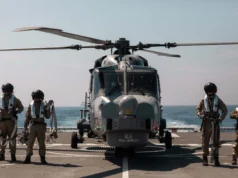


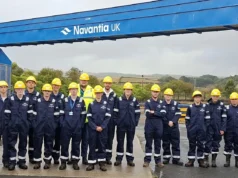
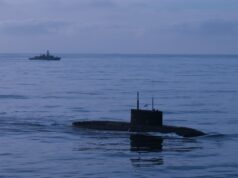
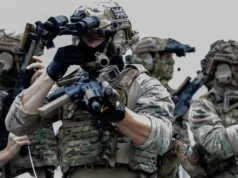

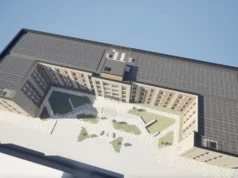



Probably the single most capable air defence platform globally. Very impressive ship.
Another 13 are approved for construction on top of those listed in the article. Up to 42 Flight IIIs may be built. If that happens at the rate of 2 a year, their current target, then they could still be building them into the mid 2040s.
Remarkable story. Construction of the class could span more than 60 years in total.
Evolutionary approach has succeeded in the animal kingdom, perhaps also in the maritime realm? USN has been less than entirely successful w/ the introduction of recent revolutionary classes of vessels (e.g., LCS, first iteration of Zumwalt class, etc ). Reasonable approach to place a bet on an evolutionary approach when the stakes are existential. 🤔🤞
Yes the more a navy gets overexcited and pushes the boundaries the more likely a failure will occur.. one of the issues with the lost RN frigate building years was that it went down a rabbit hole of what a frigate is.. the US did the same.. sometimes you just need to churn out what works in large numbers to create mass.. because a mass is key to naval warfare something that was forgotten. The US navy just needs to keep chugging out Burkes as fast as it can and it then needs to give itself a talking to on the frigate and stop arsing around with a super expensive does it all “pretend” frigate ( the USN seems to want to turn everything into a 10,000 ton + do everything ship) and buy an off the shelf 5000-6000 to. essentially unmodified (apart from minimum US systems to operate as part of the fleet) built cheap and fast with a focus on ASW and local area air defence.. and the need to churn a lot fast 50+ over the next decade as well as 20 more burkes that will give then a fleet of 135 ish major surface combatant frigates and destroyers ..( about 15 early Burkes would have gone) ) which would just about match the PLAN potential frigate and Destroyer numbers in 2035.( probably about 150) . China would have 50 extra corvettes but they are essentially regional combatants and not really within the balance beyond the first island chain.. and I suspect the USN would have very little appetite for forcing the first island chain against the PLAN in 2035….
The Burke is running out of room for all the capabilities needed today
I think sometimes you just have to build more.. if the USN focuses a later flight of Burke away from being a jack of all trades it could get more life out of them.. I think at present the USN needs a massive focus on hull numbers.
There aren’t unlimited crews even for the USN
No but if it wants to maintain its position of power it needs to find them because China is.
They want a bigger radar and better EW systems, that is not jack of all trades
No but the present iterations are.. you can gain some margin on top weight by losing the small ship flight and hanger.
Your suggestion is ripping out the hangar, seriously?
My suggestion is if they need a more focused AAW platform with heavier radars. instead of waiting 20 years to try and design USS Massive ( which they have already tried and failed to do once) maybe they use the hull they have in serial production and strip the general purpose functions from it to build a totally dedicated AAW destroyer..or they could spend 20 years designing a 15,000 ton destroyer with the radar they need and end up fighting a war with china 10 years before they can even commission the first one..
The USN is suffering from trying to put everything on its ships and gold plating the lot.. it’s essentially killing its frigate programme by trying to turn what should be a basic reasonably priced ASW frigate into another all purpose destroyer..if it tries to build a 15,000 ton top end AAW destroyer that can also do ASW frigate work it will kill that program to.. the problem the USN is facing is that in a decade it’s going to have 70 ABs facing 150+ modern Chinese major surface combatants.. it’s entire focus should be on a crash programme to deliver 150 hulls to match the likely numbers china will have.
Compare that to our tied up, U/S Darings and a past procurement mistake is glaringly obvious.
Are you suggesting we could’ve ever bought or operated a Burke class
I think the comparing other nations’ procurement woes to those of the USN is a losing strategy. The USN are procurement ineptitude incarnate.
Besides the LCS and Zumwalt, no they aren’t. The Nimitz class is stellar. Ford is working out fine.
The USN is usually the first adopter of new high tech, they don’t get the benefit of someone else figuring it out first.
Did you forget about the ongoing madness of the Constellation-class frigate programme?
The Ford programme might charitably be called ‘alright’. There have been major problems. The ship still has not operated its F-35C complement. The weapons elevators delayed delivery significantly and contributed to cost increases, for example. With the recently announced intentions to return to steam-powered catapults on the future Ford-class carriers, there’s a procurement nightmare in the waiting, even if Trump is ultimately talked down.
The incredibly slow submarine production is another failing in the Virginia submarine procurement, for example. There are countless other examples.
Yes, the US frequently introduces new technology. However, that shouldn’t come at cost to procurement.
The latest from Trumpton, is that he will sign an executive order to make sure the next carriers in the production line use “steam catapults”, as they work on the Nimitz class!
Must be nice to have the capital to halt a build schedule and implement a redesign, along with standing up a new logistics tail!
The Ford doesn’t have an F-35C complement, most (all?) Atlantic carriers do not. EMALS has launched the F-35C fine in trials. It’s dedicated to the pacific fleet for now.
There’s a little bit of a difference between land-based testing and operational deployments on the carrier.
But that’s not the point. The point was that the Ford still hasn’t produced the full package, and given the way POTUS is trending, it might be in for significant delays.
The Ford class is working out fine, give me strength. Even the damn President doesn’t agree with you there, he was ranting off about it only the other day. Fact is only when the US churns out moderately upgraded clones do they produce any warship reliably and that’s with a budget we or anyone else short if China can only dream of. Every new project of a new or, even in the case of the Fords and Americas which are essentially larger redesigns of existing platforms, has suffered serious delays and set backs. Too much Koolaid being taken in the unquestioning buttlicking of US platforms far too often while ignoring realities.
The Cousins build very impressive ships but mama mia, the names…
Ah yes the importance of minatory nomenclature. ‘Ted Stevens’ will make foes laugh rather than nervous. But yes , it is a most formidable fighting ship.
Gulf of America? When did we start calling it that!?
Isn’t it the Gulf of Mexico?
I have to admit that I laughed when I read that part of the article.
Yeah, that’s a weird choice from the editor.
More subconscious (I hope) unquestioning bootlicking sadly that’s far too evident this side of the pond under the deluge of propaganda messaging from the US regime and its sycophants. I had to look twice to check if I had missed quotes suggesting perhaps in its defence that it had been directly lifted from a US source without checking. But no quotes, so no defence, so one presumes it was sadly a conscious decision on the part of UKDJ, whether it’s because we have become so mind-melded into US Governmental Republican memes that we don’t even notice it now like the way many now pronounce Amazon, (a sad day for UK independence) or even worse it’s a consciousness acceptant of US National diktats because UKDJ is keen perhaps to not be censored by the US in its pursuance of US stories. As far as I know Britain, alongside most of the rest of the World has NOT accepted that US re-assignment, or else where does that end. So if this is deliberate then I foresee a time when a further name change might be appropriate as UKDJ becomes ETDJ (EastTrumpiaDefenceJournal)… you know, just to keep onside with our new alien overlords. Thin end of the wedge I fear as we become further colonised.
Indeed. Only certain type of septic calls it that.
Probably proof that this article was written using AI.
I see we have to refer to The Gulf of America to please our American cousins!